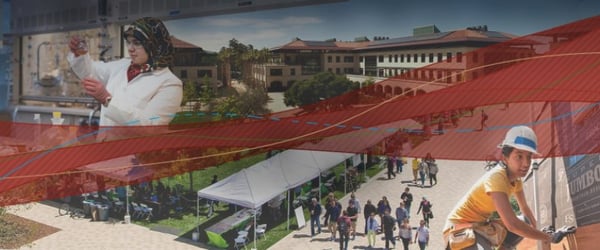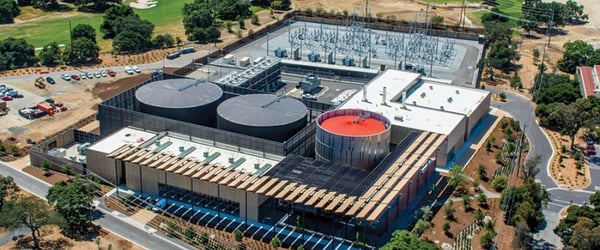I recently had the chance to catch up Fahmida Ahmed Bangert, the Director of Sustainability and Business Services at Stanford University. She has spent the past decade creating and overseeing an impressive number of leading sustainability initiatives including heat recovery, GHG emissions reduction and sustainable sourcing. With a new ambitious zero-waste goal, Fahmida and her team don't show any signs of slowing down.
FB: We want sustainability to be a core value in everything we do. That was the vision we set a decade ago and it is still true today. It sounds simple, but a core value is difficult to realize unless it is upheld though research, action, result and cultural acceptance of the results.
We established sustainability as a criteria for decision making on all major campus and departmental processes. In addition, we place a premium on innovation. We aim to create something new, as opposed to following the norm. As a result, our programs do have an innovative flare, but they also offer the benefits of replicability.
Finally, the administration is deliberately supportive of sustainability in addition to it being a grass roots initiative. Since sustainability impacts not just the quality of our programs but also makes prudent business sense, campus leadership considers sustainability a strategic advantage for Stanford.
 Image source: https://sustainable.stanford.edu/governance.
Image source: https://sustainable.stanford.edu/governance.
It's interesting that you consider sustainability a strategic advantage for Stanford. How do you know it makes business sense? How do you determine the ROI on sustainable buildings?
FB: To improve the cost-effectiveness of its building and renovation programs, Stanford invests in buildings with improved long-term performance. The Guidelines for Life Cycle Cost Analysis (LCCA) instruct Project Teams to consider not only the "first costs" of a building but also long-term costs, including utilities, operations, and maintenance. The university takes an integrated approach to new construction from the beginning of each project, so all sustainable building strategies can be suggested and considered upfront and built into the initial LCCA analysis.
From there, a construction budget is set, so the sustainable design elements are built into the budget from the beginning, given that their ROI is justified through the LCCA model. Generally, Stanford will adopt building strategies with an ROI of ten years or less.

FB: First, it’s critical to understand where the campus presently is, and where it needs to go with regard to sustainability. Identify what are the key priorities with regard to infrastructure and engagement, and set realistic goals that you can use to benchmark progress, even if they are internal. At Stanford, a critical driver of success has been utilizing both a top-down and bottom-up approach to identify opportunities, facilitate change, and advance programmatic initiatives.
The AASHE has over 800 member institutions that contribute to its resource library and can be a good starting point to explore for relevant information. Also, participation in AASHE STARS can expose the breadth of sustainability opportunity in the campus environment, and highlights focal areas where growth is needed.
Can you discuss a marque project you're most proud of?
FB: Yes! I was fortunate to be part of an amazing project which began in 2008. Stanford Energy System Innovations (SESI) has been our flagship sustainability project over the last few years. Since 2015, Stanford has a new campus energy system powered by renewables, designed to meet the current and future energy needs of Stanford University in an environmentally, socially, and economically sustainable way.
Aerial SESI Image photo source: Stanford University.
SESI includes a new Central Energy Facility featuring heat recovery and on- and off-campus solar power, resulting in a 65% renewable energy portfolio, 68% reduction in greenhouse gas emissions, 18% reduction in potable water consumption, and $420 million in cost savings over the next 35 years. SESI is a living laboratory for demonstrating how a community can aggressively address climate change through an equitable and economical approach.
What's on the horizon with upcoming initiatives?
FB: I'm excited about our Zero Waste (90% diversion or higher) plan and implementation, along with key initiatives in really diversifying the procurement policies of the university to include sustainable products and choices. I see these initiatives as being two sides of the same coin. The smarter and greener products we buy, the less need for landfill down the road. Stanford has set a Zero Waste by 2030 goal, stay tuned!
 Fahmida Ahmed Bangert directs Stanford University’s Sustainability and SEM Business Services initiatives and the campus program Sustainable Stanford. Fahmida supports the department’s long-term energy infrastructure planning; designs, implements, and directs assessment and outreach for sustainability programs; oversees business systems and analytics initiatives; co-chairs Provost’s Committee on Sustainability; and steers academic integration to aid program implementation.
Fahmida Ahmed Bangert directs Stanford University’s Sustainability and SEM Business Services initiatives and the campus program Sustainable Stanford. Fahmida supports the department’s long-term energy infrastructure planning; designs, implements, and directs assessment and outreach for sustainability programs; oversees business systems and analytics initiatives; co-chairs Provost’s Committee on Sustainability; and steers academic integration to aid program implementation.
She earned a B.A. in Economics from Smith College and a Master’s in Environmental Science and Management from the Bren School at UC Santa Barbara. When not on campus, she's busy attending to the whims of her two spirited children.
